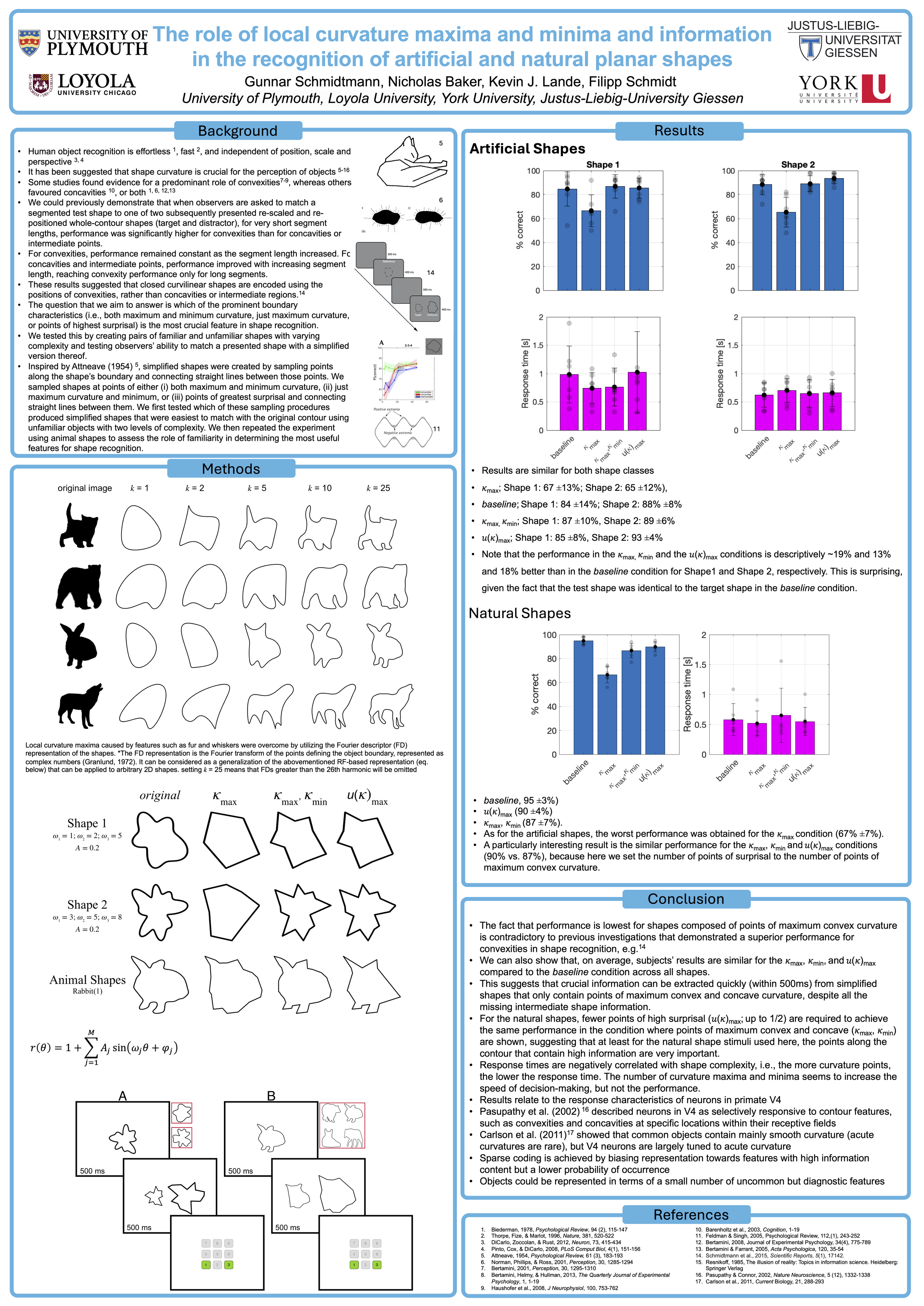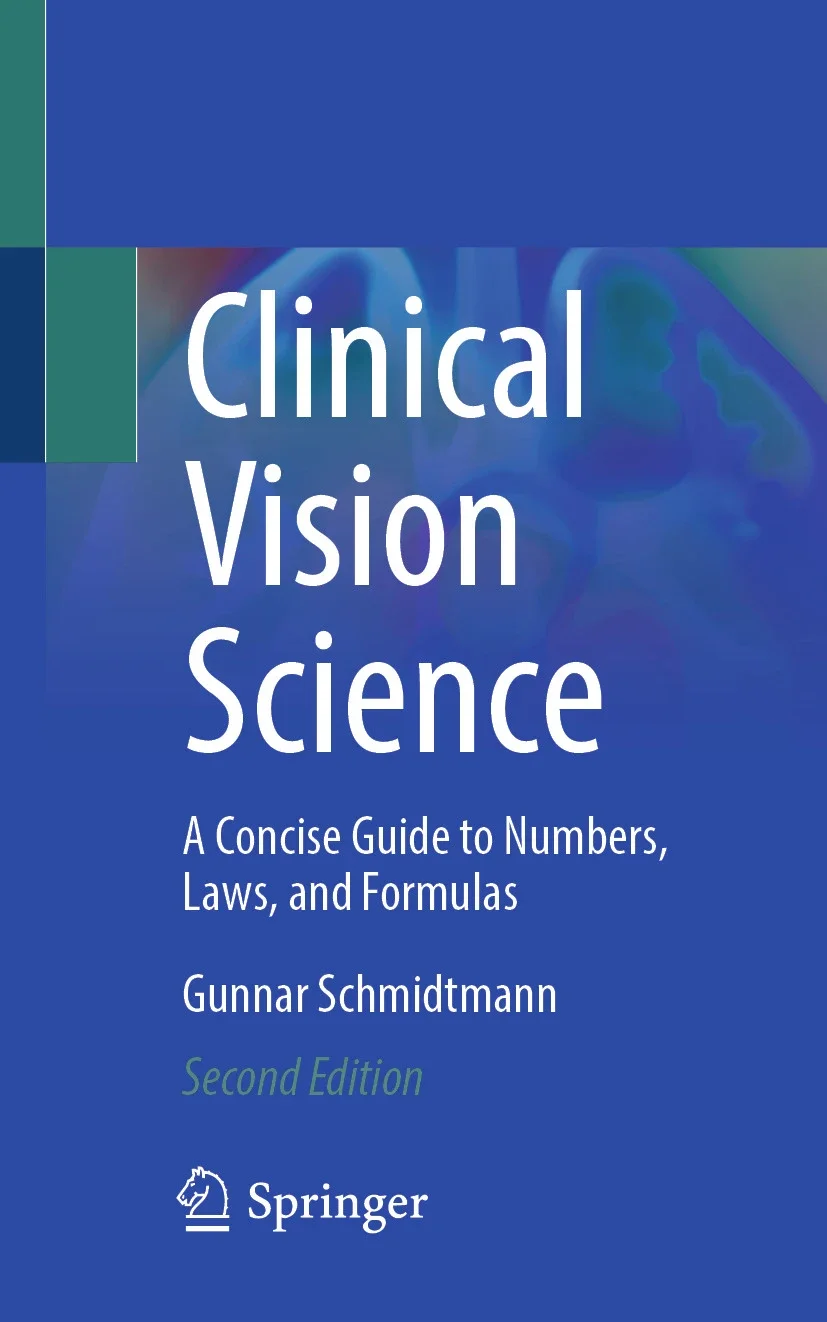Connecting the dots - Recognition of artificial and natural shapes relies on representing points of high information
Gunnar Schmidtmann, Nicholas Baker, Kevin J. Lande, Filipp Schmidt
Physiological and psychophysical evidence suggests that the visual system represents object outlines based on prominent curvature features, in particular regions of extreme curvature (such as convex maxima and concave minima). Curvature extrema often coincide with points of high information content (“surprisal,” in information-theoretic terms). However, this relationship is only correlational. To date, no study has directly compared the role of curvature extrema with the role of surprisal itself. Does the visual system selectively encode curvature extrema because they tend to be informative—because they are heuristic proxies for high-surprisal points along the contour—or does it directly encode informative points that happen often to be located at curvature extrema? We addressed this question in a series of shape-matching experiments, testing how curvature extrema and information content contribute to recognition. Observers (N = 7) matched a smooth test shape to one of two re-scaled shapes (target and distractor) constructed by connecting, with straight lines, points corresponding to (i) curvature maxima, (ii) both curvature maxima and minima, or (iii) points of maximum surprisal. A baseline condition used identical test and target shapes. Stimuli included artificial shapes composed of compound radial frequency patterns and natural shapes (animal outlines), the latter enabling us to disentangle curvature and information effects by restricting sampled points. Recognition performance was higher for natural than artificial shapes (95% vs. ~86%). Performance for shapes containing a few points of high information matched performance on trials containing all curvature extrema and baseline trials. It also exceeded performance for shapes with curvature maxima alone (65% vs. ~90%). These findings suggest that shape representation emphasizes features with high informational content rather than curvature extrema per se.
Schmidtmann, G., Baker, N., Lande, K. J., & Schmidt, F. (2025). Connecting the dots—Recognition of artificial and natural shapes relies on representing points of high information. bioRXiv. https://doi.org/10.1101/2025.11.17.688832





